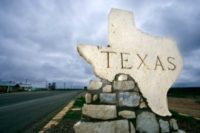The wildfire smoke spreading across the United States and Canada shows the need for urgent action to protect workers from the ongoing effects of climate change, say leaders of the National Council of Occupational Safety and Health (National COSH).
“This is not a one-time crisis,” said Marcy Goldstein-Gelb, co-executive director of National COSH. “Dangerous pollution in the air we breathe will be a fact of life for years to come, because climate change has greatly increased the occurrence of wildfires and other extreme weather events.”
“Right now, only two of 50 states – California and Oregon – have specific safety rules which protect workers from wildfire smoke,” said Goldstein-Gelb. “We urgently need nationwide, federal standards to protect workers from smoke, heat stress and extreme weather events. Paid sick leave, a basic and humane standard for all workers, is more important than ever at a time when daily life and work activities are exposing hundreds of millions of people to the risk of respiratory and cardiovascular diseases.”
The state of Washington has proposed safety standards for wildfire smoke; these regulations must be finalized and implemented as soon as possible, with the strongest possible standards to protect workers.
What you can do now to stay safe at work:
In the absence of state and federal standards, workers can take action now with their employers, to reduce the risks from wildfire smoke and other extreme weather events.
National COSH and safety experts recommend the following steps:
Monitor the EPA’s Air Quality Index (AQI) at AirNow.gov, to learn current conditions in your workplace and community.
An AQI of 100 or greater means risks for sensitive groups, including children, the elderly and anyone with a pre-existing respiratory or cardiovascular condition.
An AQI of 151 or greater means breathing outdoor air is dangerous for everyone.
When the AQI shows risks for you and your co-workers, advocate with your employer for proper protections
Reduce, relocate or reschedule work
Reschedule strenuous work – such as heavy lifting or long assignments outdoors – for a different time when air quality is less dangerous
For those who must continue to work in health care, transportation, essential retail and other settings, employers must provide masks and respirators, along with training for proper fitting and use.
Monitor workers for symptoms of exposure.
Ensure paid sick time to any workers experiencing symptoms, which may include eye, nose, and throat irritation, coughing, runny nose, headache, fatigue, difficulty breathing, chest pain, increased heart rate and exacerbation of asthma.
For those working indoors, employers must ensure that ventilation systems and air filters are maintained to remove smoke particulates.Central air conditioning systems should be equipped with air filters with at least a Minimum Efficiency Reporting Value (MERV) of 13 or above (MERV-13).
Workers with access to a union or worker center can advocate together for needed protections, said Goldstein-Gelb – and all workers have the right to a safe workplace.
“Employers have a legal and ethical obligation to provide a workplace free from recognized hazards,” said Goldstein-Gelb. “When the sky is turning orange with wildfire smoke, that’s a hazard we all can recognize.”
Resources for workers:
EPA Air Quality Index: AirGov.Now
Smoke and Air Quality Health Advisory Information for Workers, from the New York Committee for Occupational Safety and Health (NYCOSH)
CalOSHA regulations on Protection from Wildfire Smoke






